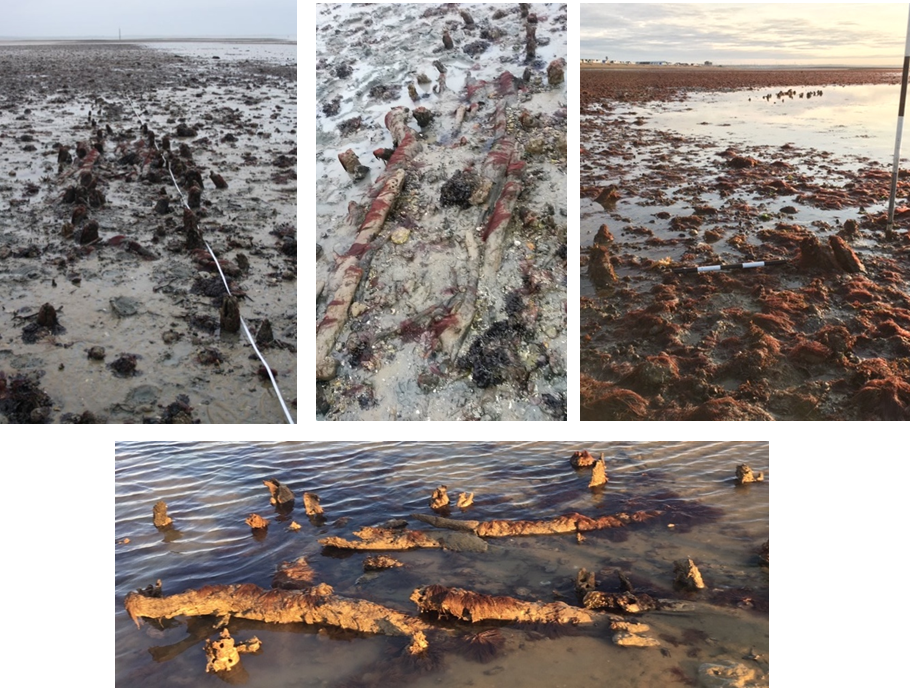The Causeway is an enigmatic structure that sits across an ancient palaeo-channel, just offshore in the Western Solent. The exposed material was initially reported to the MAT in February 2015 when it was visited, sketched and photographed. It was subsequently visited as part of the CITiZAN project in 2017 and again by the MAT in August of the same year. A sample from a stake was recovered and dated to 42 cal BC – 60 cal AD while a sample of wattle-work within the structure was dated to 86–242 cal AD. What had become clear over the intervening years was that the feature was becoming more exposed as the silt was winnowing away and timbers had been lost. This led to a concerted effort to record and excavate parts of the structure in 2018.

The location at extreme low water, with the limited window of time to work before the tide came in, warranted a diving operation at high tide to carry out the recording, excavation and sampling. During a week of fieldwork, the site was surveyed, photographed and three evaluation trenches were excavated. This resulted in a 3D digital photomosaic model of the structure that measured 35m long, the exposure of new timbers within the controlled excavations, and the recovery of samples from four wooden posts. The samples were submitted for radiocarbon dating and gave ‘highest probability dates’ of 23–140 cal AD, 41 cal BC to 80 cal AD, 122–1047 cal BC and 1447–1373 cal BC. The oldest Bronze Age date came from the large oak timbers at the western end of the site. The second Bronze Age date came from the central feature, the older Roman date at 41 cal BC to 80 cal AD, came from a small timber at the eastern end of the ‘causeway’ while the youngest date, also Roman, came from a larger vertical timber within the central structure.

Further fieldwork at low water in September 2018 identified additional structural elements extending south from the western end. This demonstrates that it is more complicated than the linear posts first identified. In total, 100 of the more robust timbers were tagged. Additional survey identified a further 8 similar timbers and it is suspected that many more remain buried.
The site has continued to erode and degrade over the last few years and a number of timbers have been washed away. The less consolidated sediments of the palaeo-channel are being steadily removed whereby increasing the urgency to record and interpret the site.
